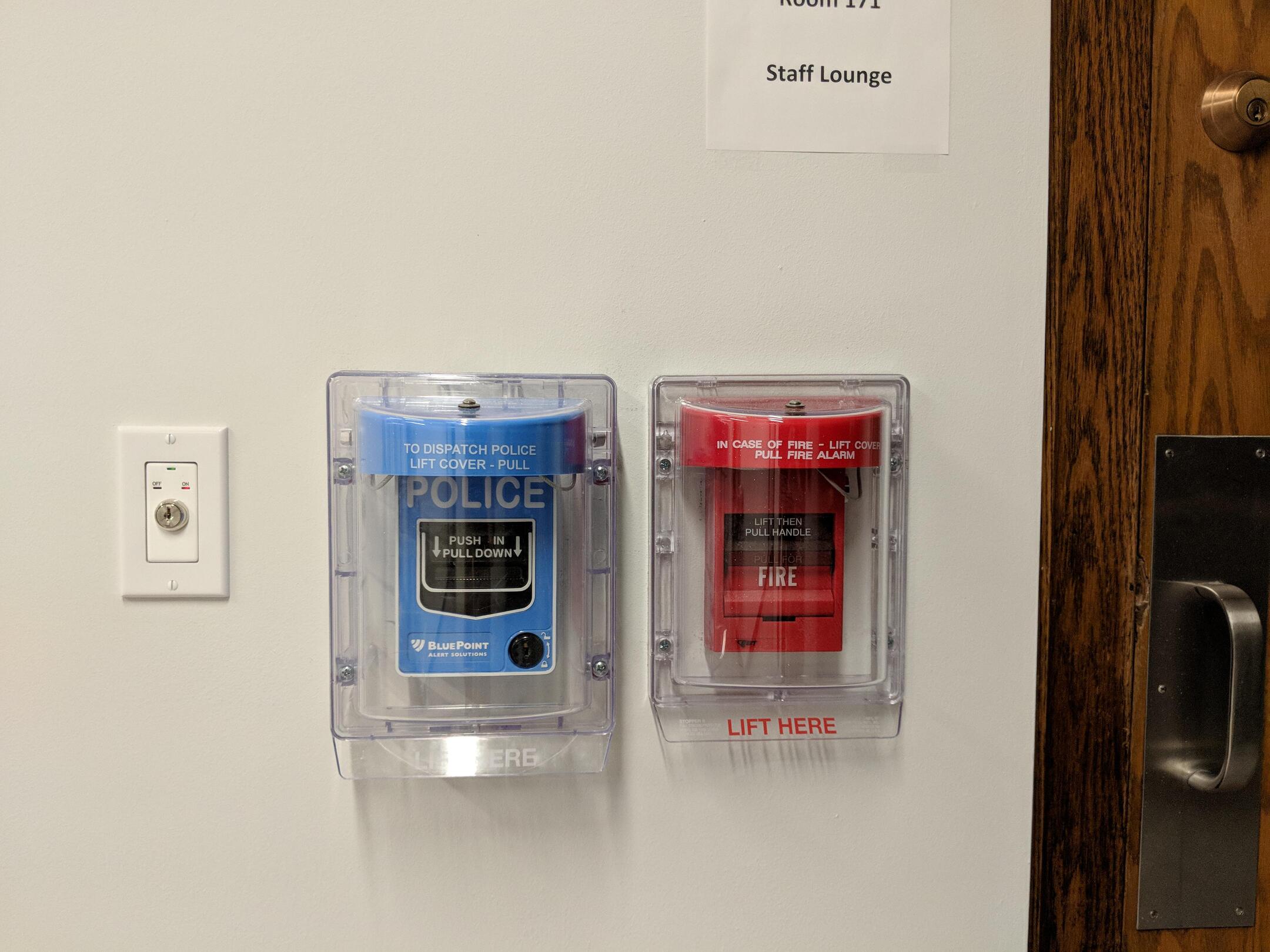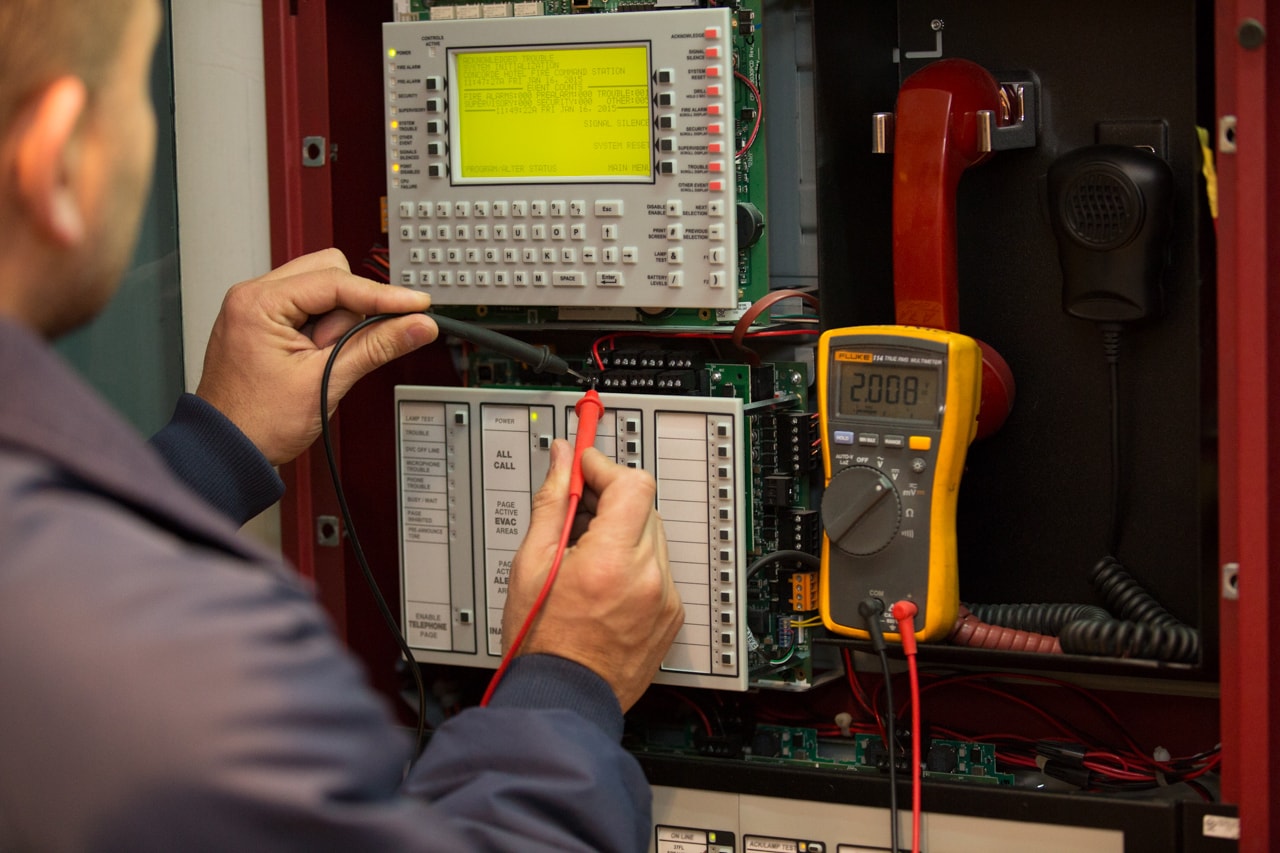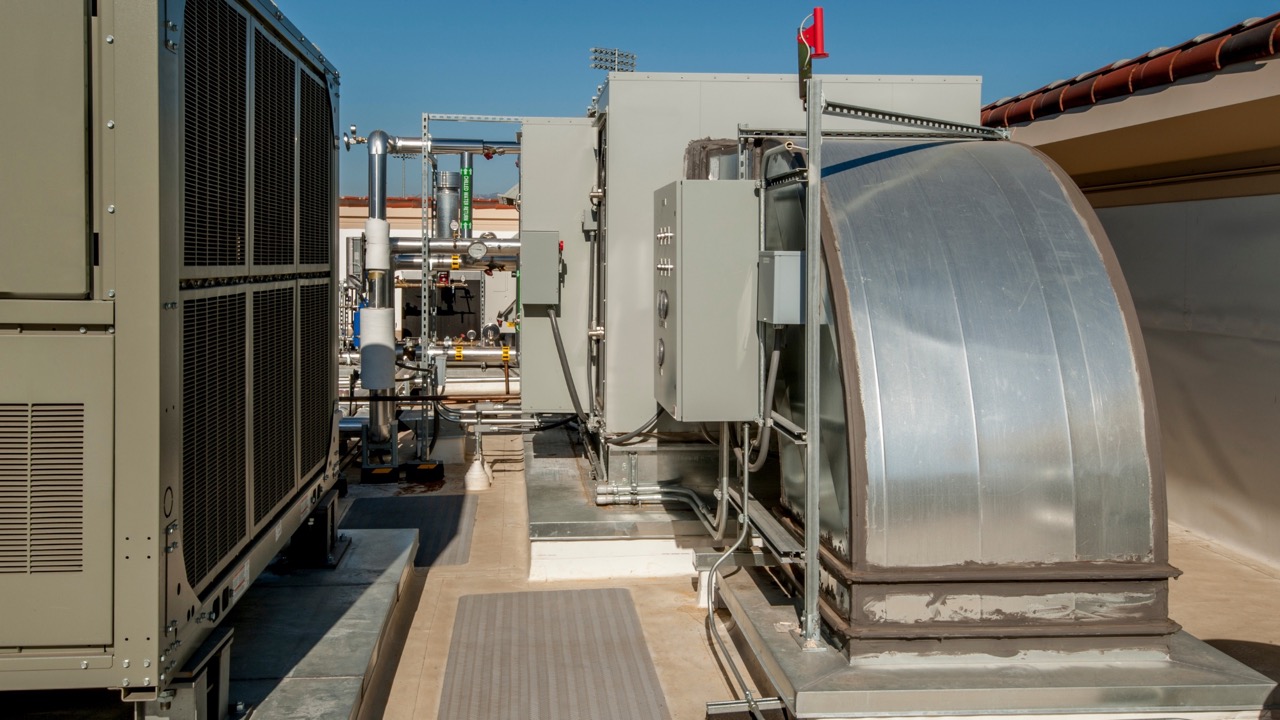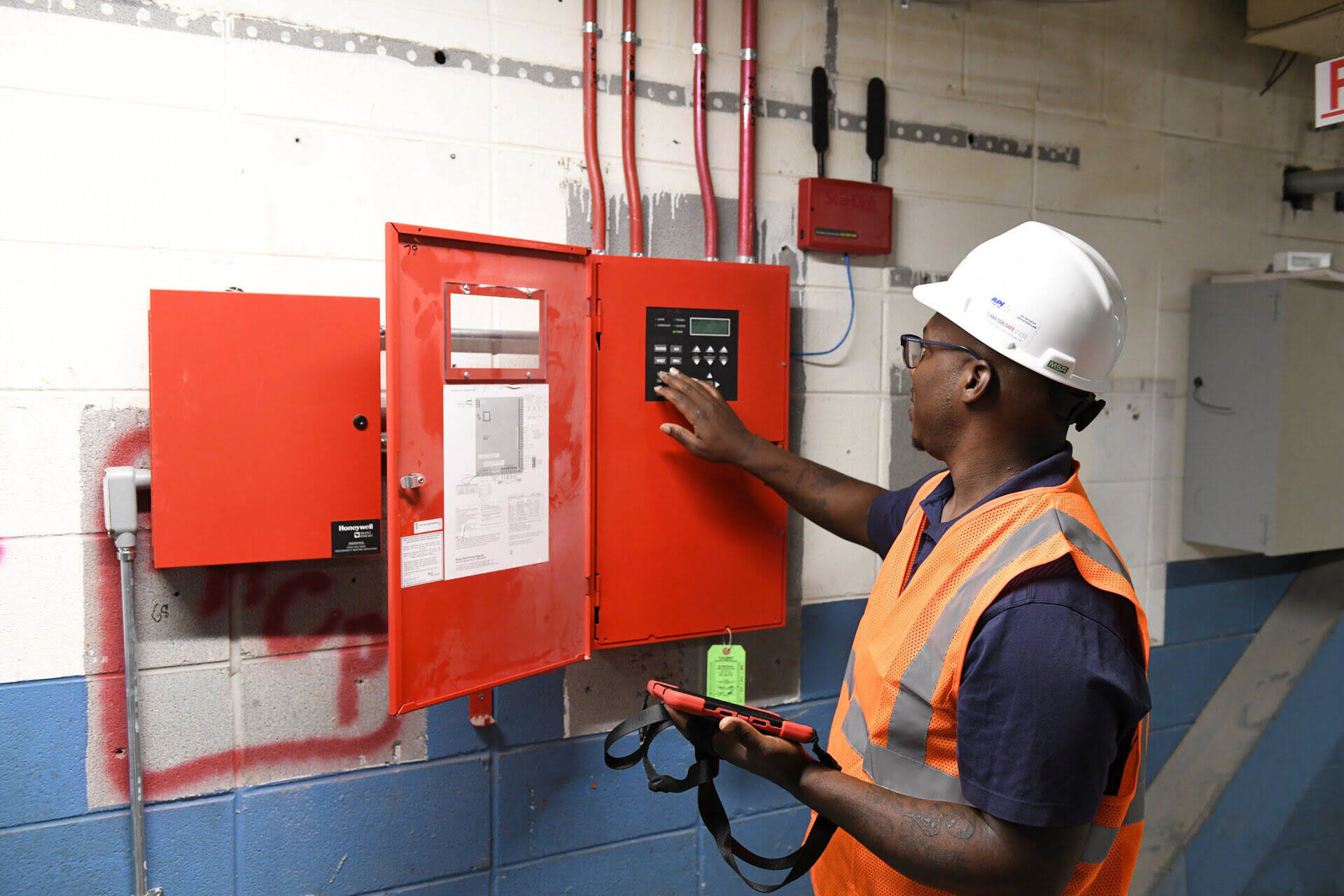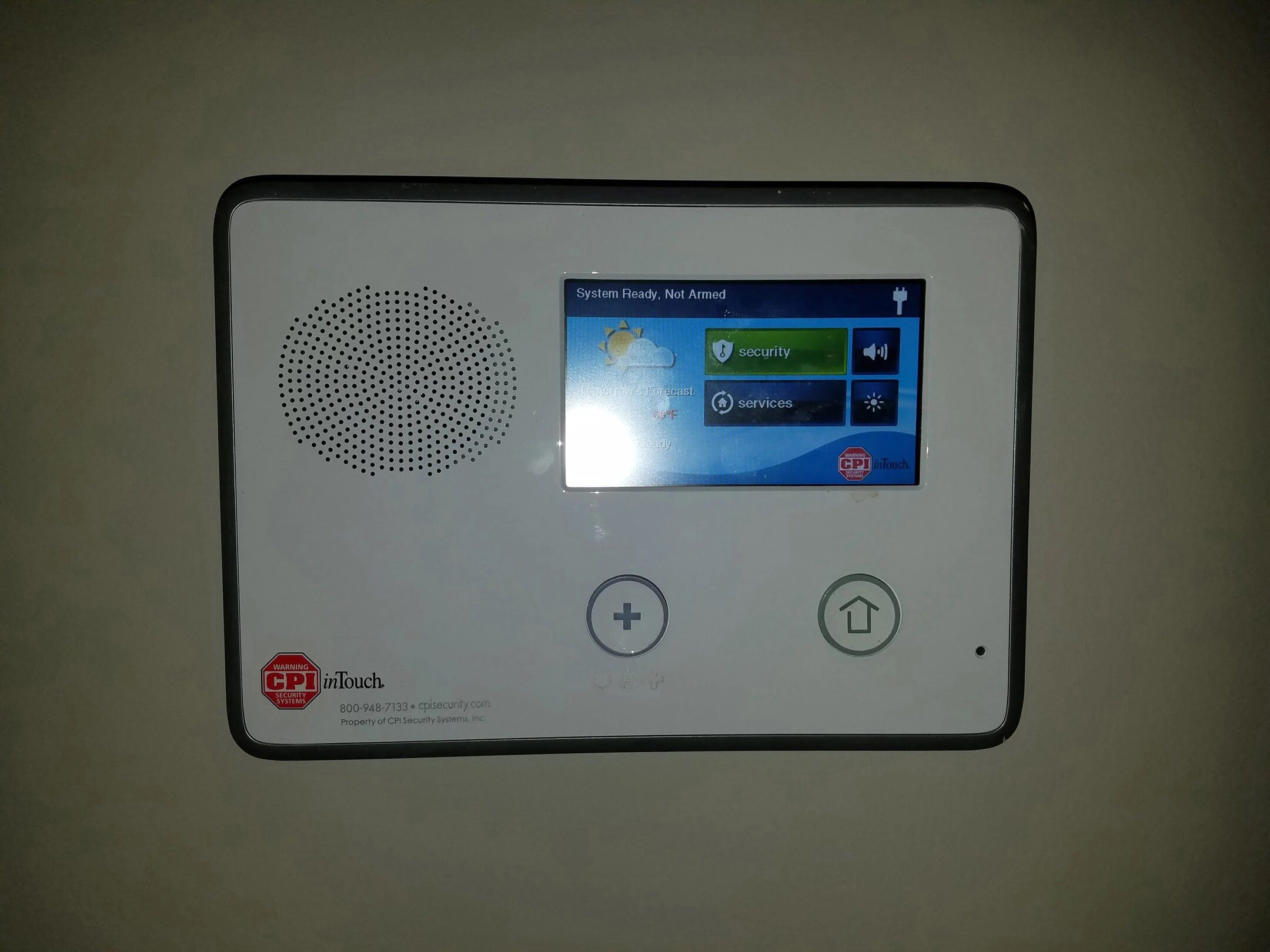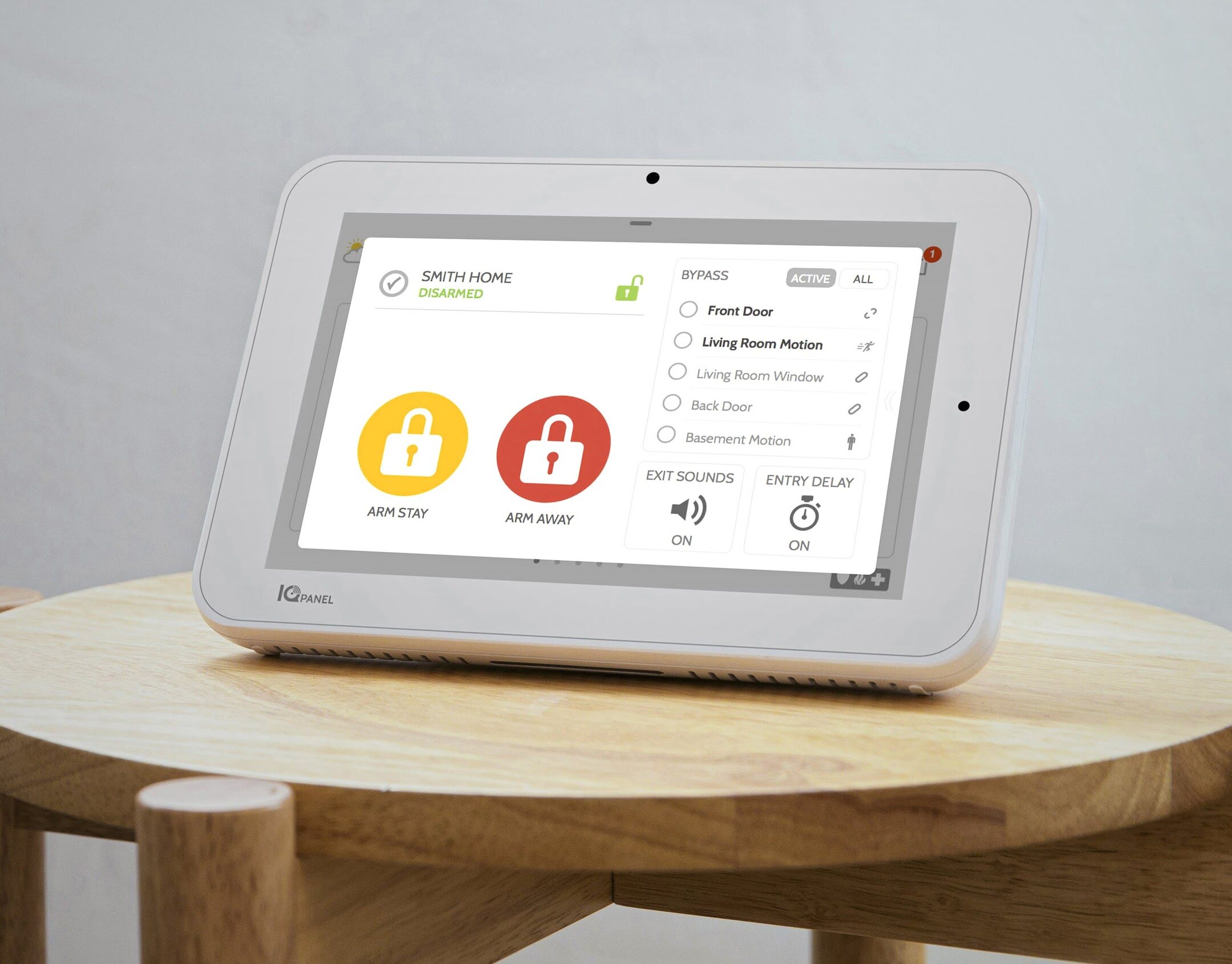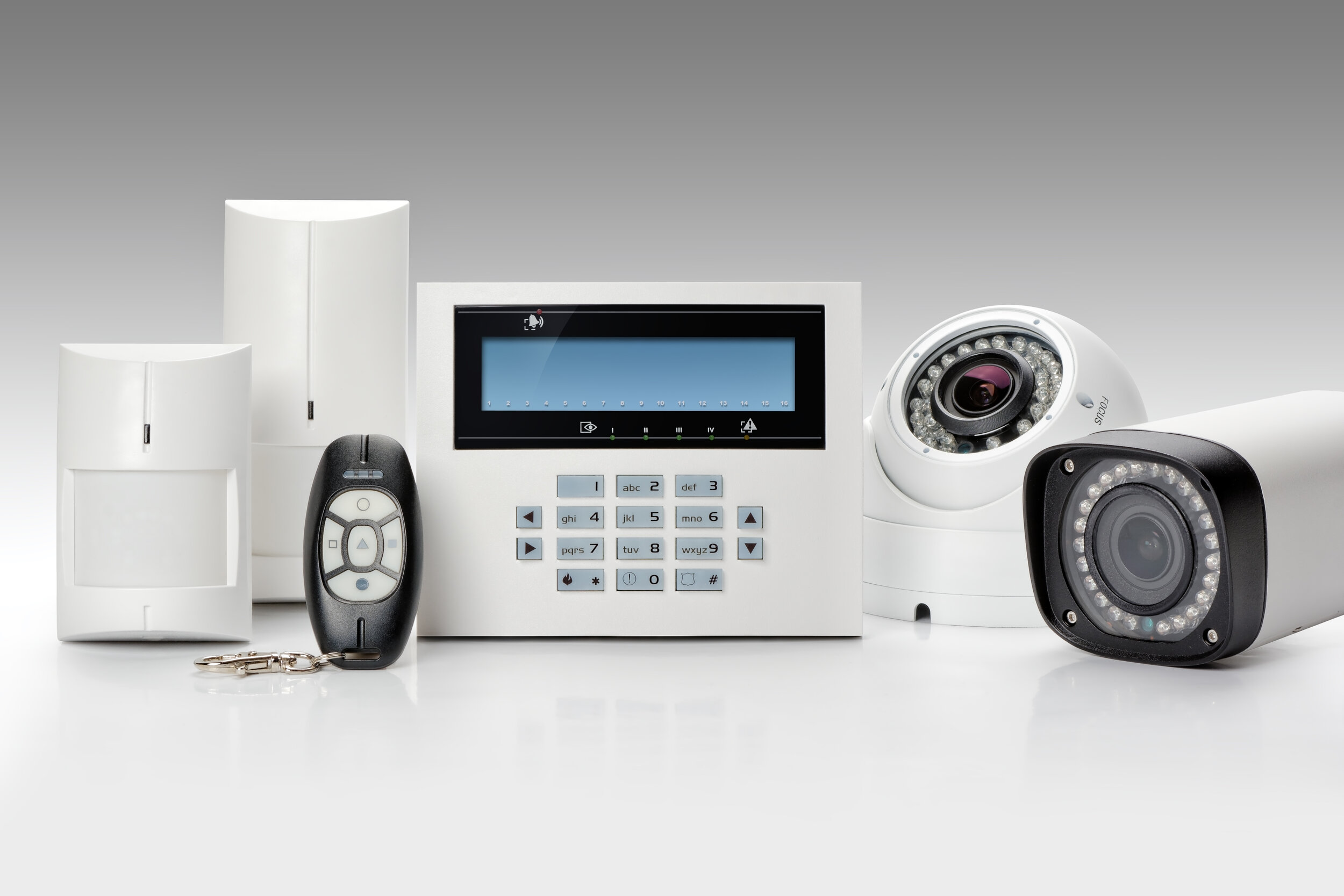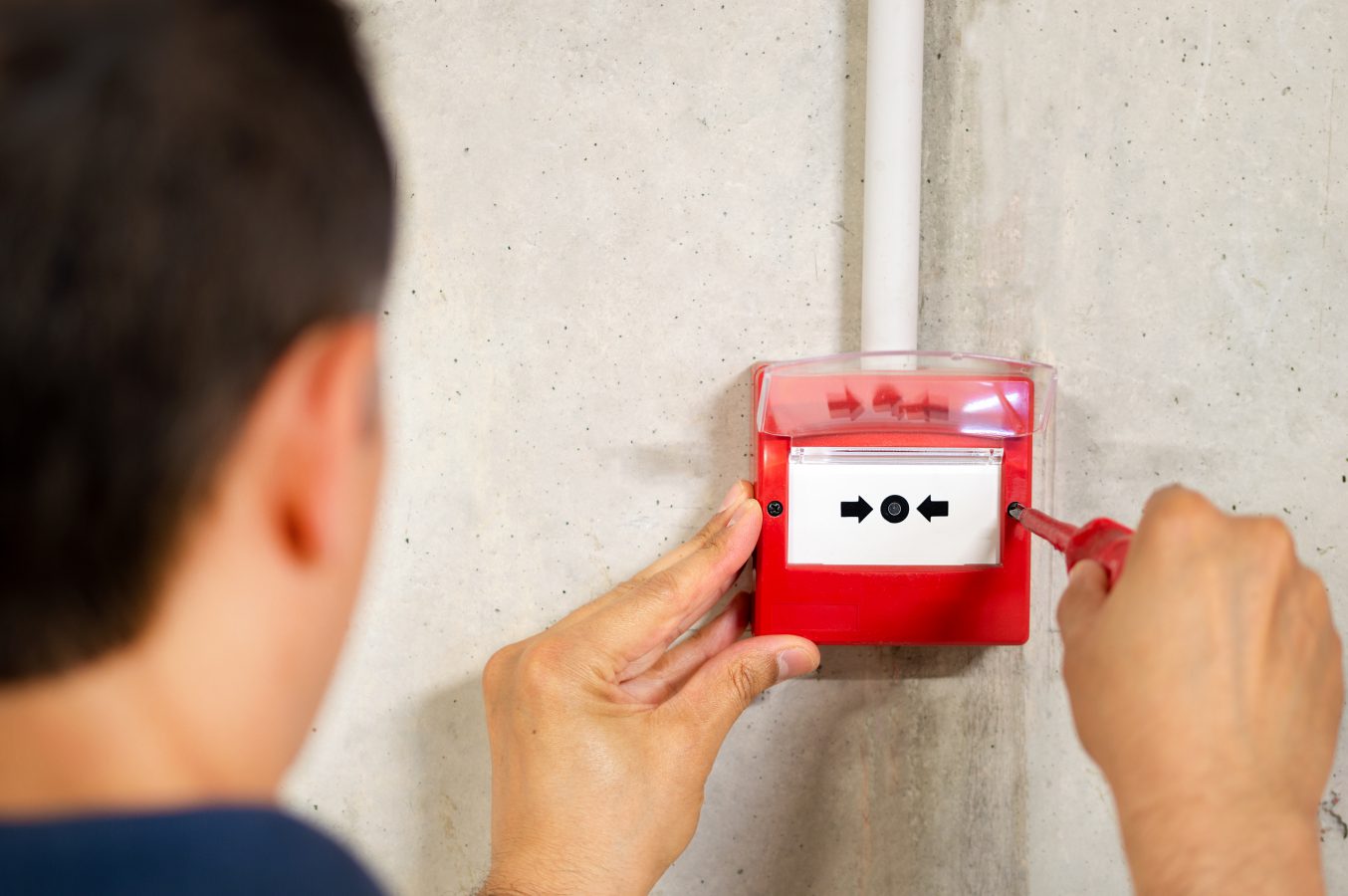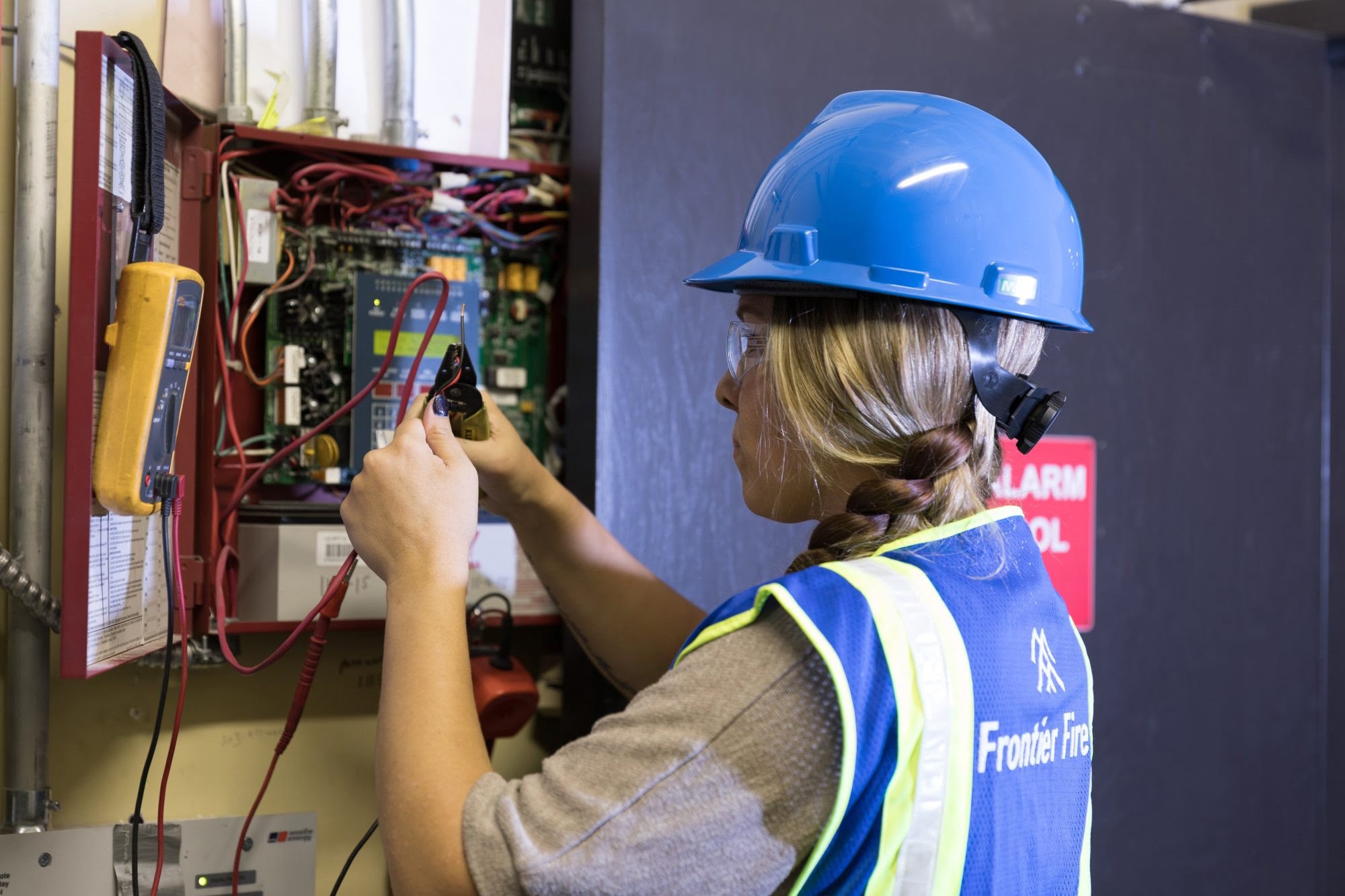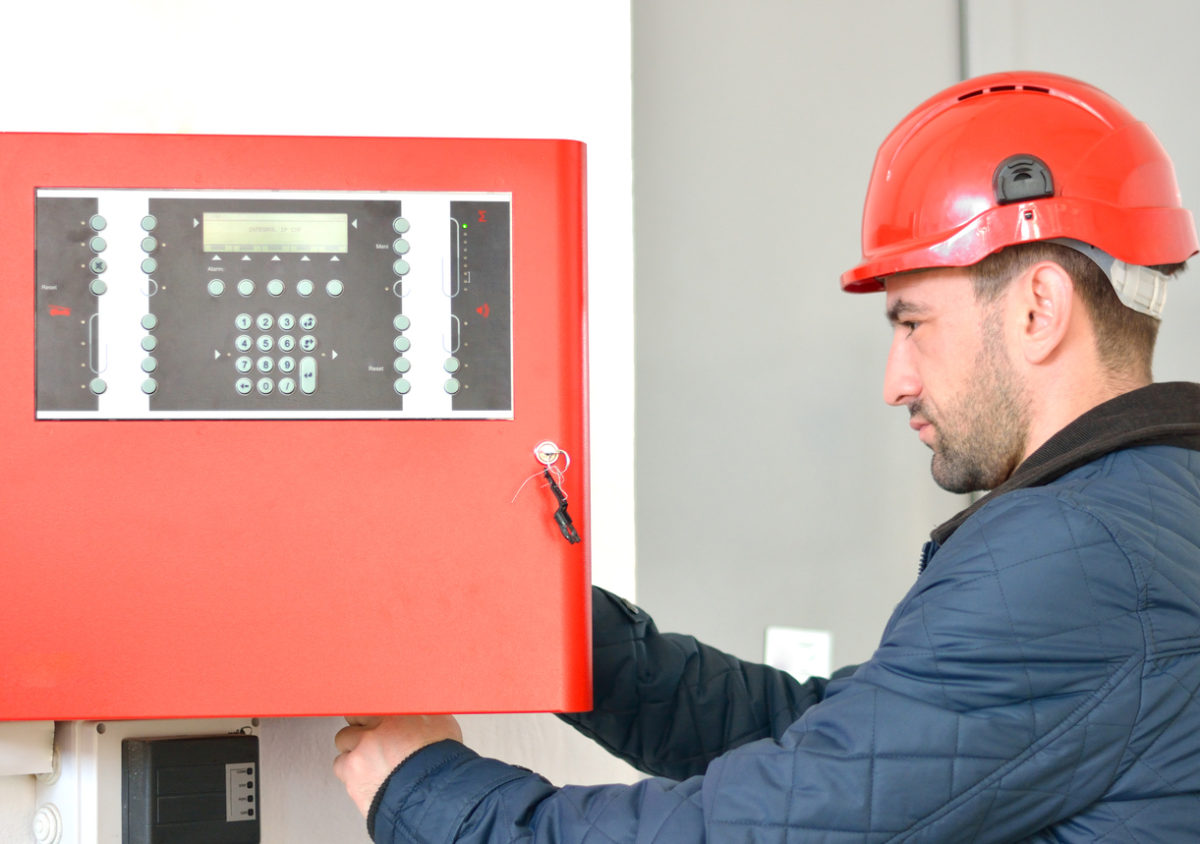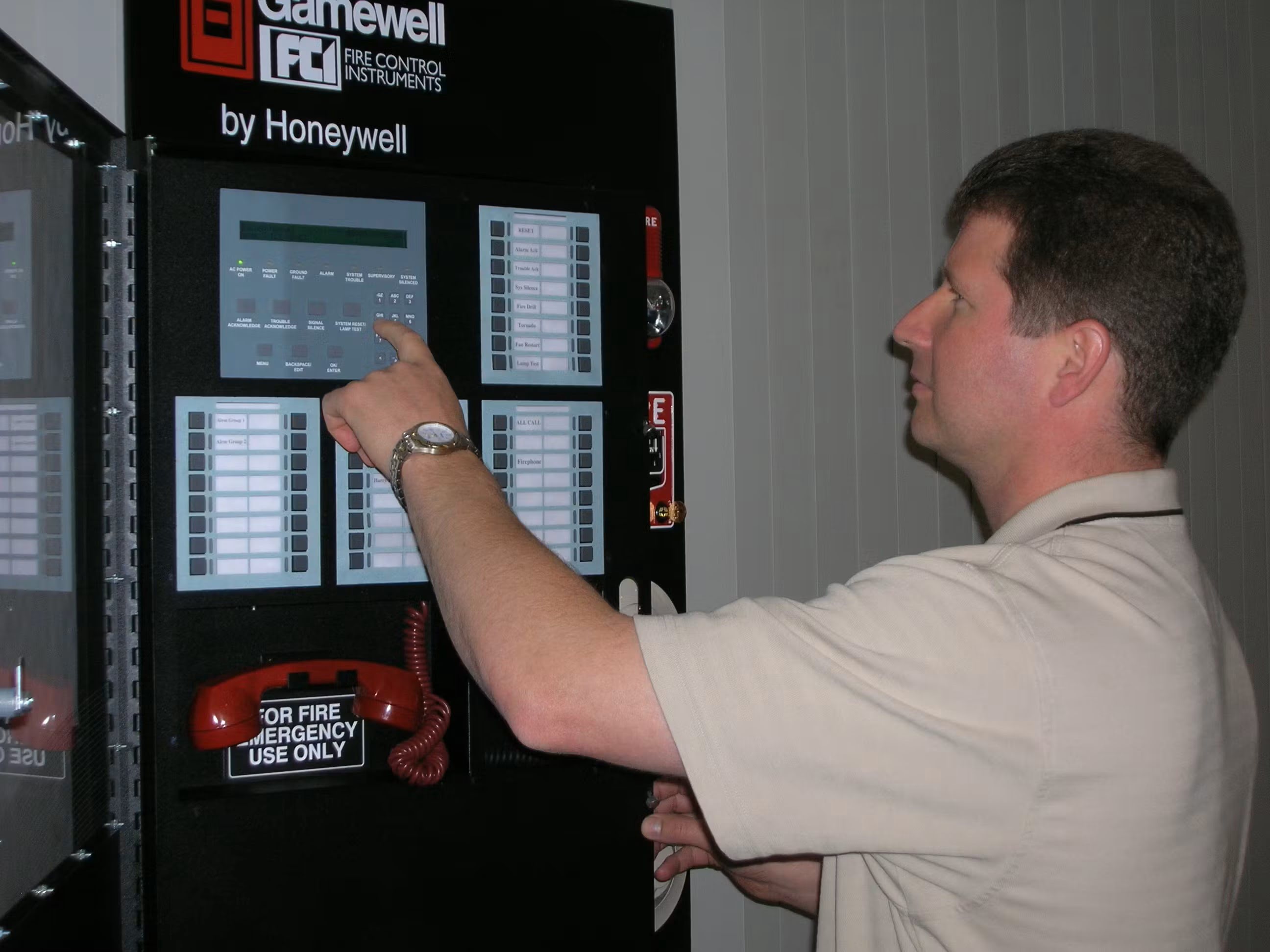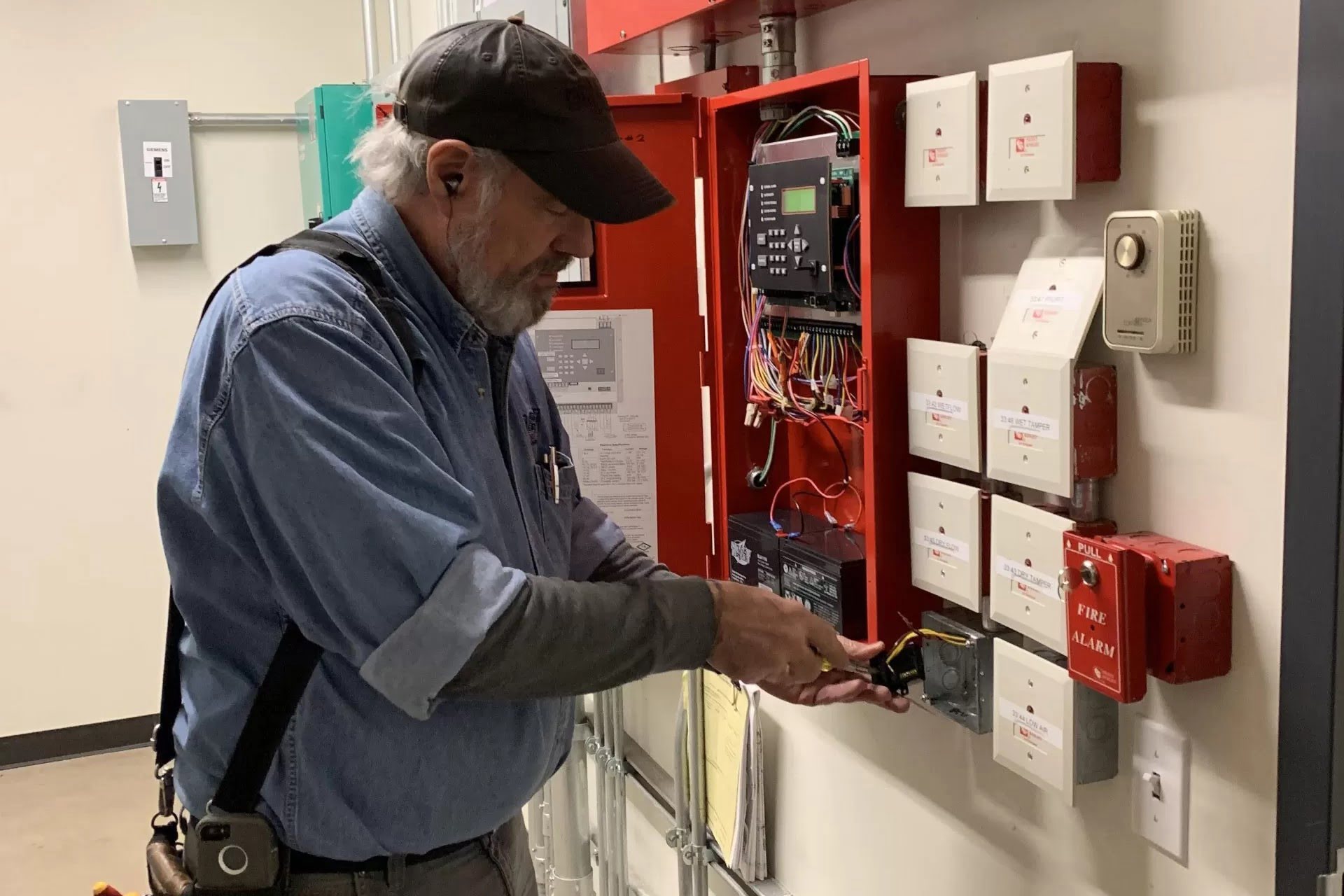Home>Home Security and Surveillance>How Do Fire Alarm Systems Work
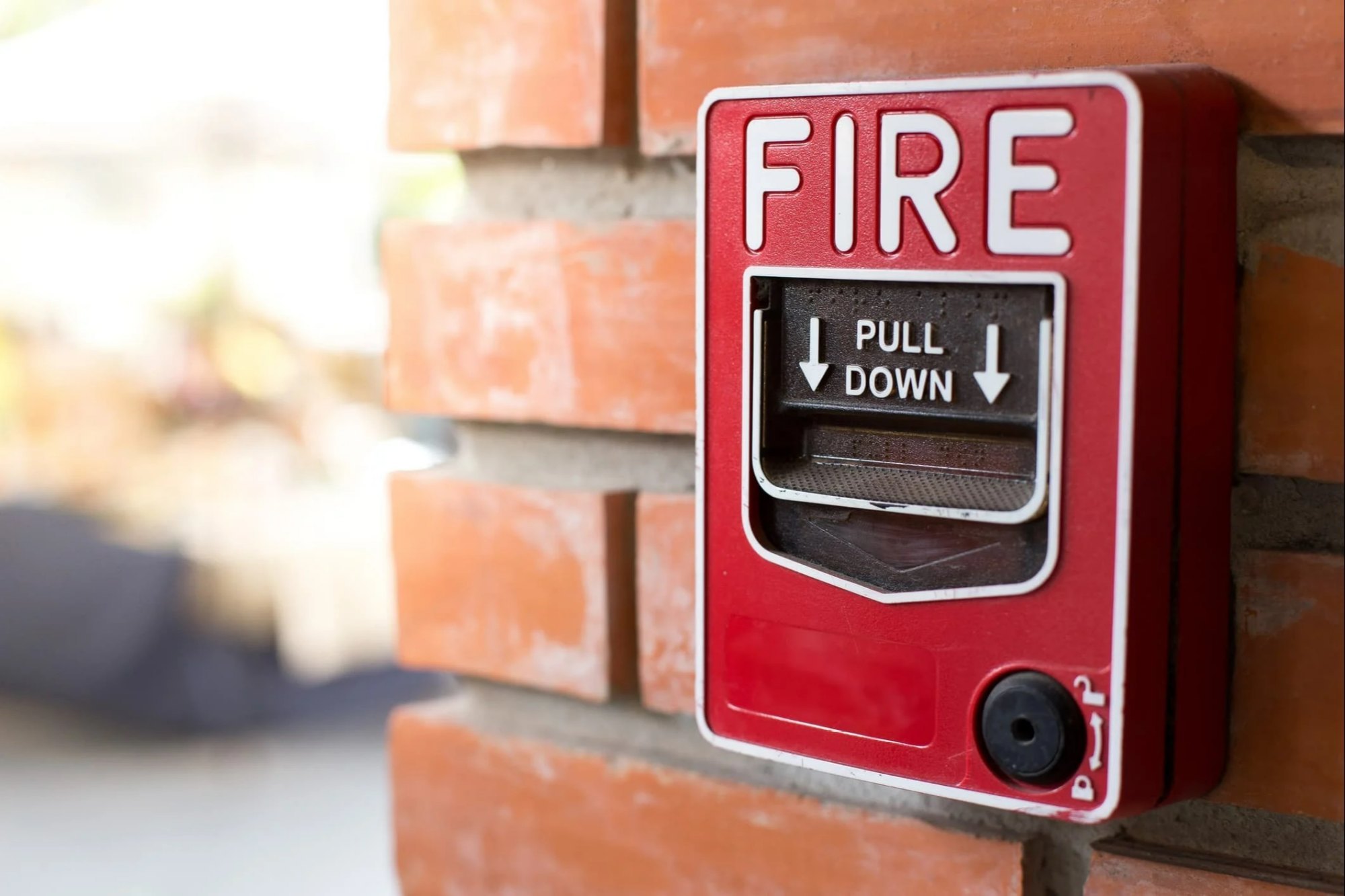

Home Security and Surveillance
How Do Fire Alarm Systems Work
Modified: March 7, 2024
Discover how fire alarm systems work to protect your home. Learn about the key components and technology used for home security and surveillance.
(Many of the links in this article redirect to a specific reviewed product. Your purchase of these products through affiliate links helps to generate commission for Storables.com, at no extra cost. Learn more)
Introduction
Welcome to the world of home security and surveillance! In this day and age, it’s crucial to prioritize the safety and protection of our homes and loved ones. One of the key aspects of a comprehensive home security system is a reliable fire alarm system. In this article, we will explore how fire alarm systems work and their importance in safeguarding your home.
When it comes to fire alarm systems, it’s essential to have a clear understanding of its basic components, types, and operation. Whether you are a homeowner looking to install a new fire alarm system or simply seeking knowledge about home security, this article will provide you with the insights you need.
So, let’s dive in and explore the fascinating world of fire alarm systems, starting with their basic components.
Key Takeaways:
- Fire alarm systems work by using detection devices, control panels, and notification devices to sense and alert occupants of potential fires, allowing for quick response and evacuation.
- Regular testing, maintenance, and training are essential to ensure the reliability and effectiveness of fire alarm systems, ultimately enhancing the safety of homes and loved ones.
Read more: How Hard-Wired Fire Alarm Systems Work
Basic Components of a Fire Alarm System
A fire alarm system consists of several essential components that work together to detect and alert occupants in the event of a fire. Understanding these components is crucial for comprehending how fire alarm systems operate. Here are the key components of a typical fire alarm system:
- Fire Detection Devices: These are the devices responsible for sensing the presence of fire or smoke. The most common fire detection devices include smoke detectors, heat detectors, and flame detectors. Smoke detectors use optical sensors or ionization chambers to detect smoke particles, while heat detectors monitor the rise in temperature. Flame detectors, on the other hand, detect the presence of flames by sensing the emitted light spectrum.
- Control Panel: The control panel is the brain of the fire alarm system. It receives signals from the fire detection devices and processes the data to make decisions, such as sounding the alarms and initiating emergency protocols. The control panel displays vital information about the system’s status and allows users to interact with the system, such as silencing alarms or initiating manual tests.
- Notification Devices: These devices are responsible for alerting occupants in case of a fire emergency. Common examples include sirens, strobe lights, and speakers. When the control panel receives a signal indicating a fire, it activates the notification devices to ensure that everyone in the premises is aware of the potential danger.
- Emergency Power Supply: To ensure system functionality even during power outages, fire alarm systems are equipped with emergency power supplies, such as backup batteries or generators. These power sources kick in when the main power supply fails, allowing the system to continue operating and notifying occupants.
- Initiating Devices: These devices provide a way for individuals to manually trigger the fire alarm system. Wall-mounted pull stations or manual call points are commonly used initiating devices. When activated, they immediately send a signal to the control panel, indicating the presence of a fire.
These are the basic components that make up a fire alarm system. Understanding each component’s role is crucial for comprehending how the system works and how it provides effective fire detection and notification.
Types of Fire Alarm Systems
Fire alarm systems come in various types, each designed to cater to different needs and environments. Let’s explore some of the common types of fire alarm systems:
- Conventional Fire Alarm Systems: Conventional fire alarm systems are the most basic type. They divide a building into zones, with each zone connected to a specific circuit on the control panel. When a fire is detected in a specific zone, the control panel indicates the zone where the fire originated, allowing occupants to evacuate safely. However, conventional systems lack the ability to pinpoint the exact location of the fire.
- Addressable Fire Alarm Systems: Addressable fire alarm systems offer more advanced features compared to conventional systems. Each device in an addressable system has a unique address that allows for precise identification of its location. This enables the control panel to provide detailed information about the exact device that triggered the alarm, enhancing response time and reducing false alarms.
- Wireless Fire Alarm Systems: Wireless fire alarm systems utilize radio frequency signals to communicate between devices. These systems eliminate the need for extensive hardwiring, making installation quick and convenient. Wireless fire alarm systems are especially beneficial for retrofitting buildings or areas where wiring is impractical.
- Analog Alarm Systems: Analog alarm systems offer advanced detection capabilities. They continuously monitor the environment for changes in smoke, heat, or other fire-related factors. These systems provide more accurate and reliable detection by analyzing subtle changes over time, reducing false alarms and enhancing response efficiency.
- Addressable Voice Evacuation Systems: Addressable voice evacuation systems integrate speech communication capabilities into the fire alarm system. In addition to sounding traditional alarms, these systems can broadcast voice instructions, providing clear and specific guidance to occupants during an emergency evacuation.
Each type of fire alarm system has its own set of advantages and is suitable for different applications. When choosing a fire alarm system for your home or business, consider factors such as the building size, occupancy, and specific requirements to ensure you select the most suitable type.
Initiation Devices
Initiation devices play a critical role in the early detection of fire by sensing and initiating the fire alarm system. These devices are strategically placed throughout a building to ensure comprehensive coverage. Let’s take a closer look at some common initiation devices:
- Smoke Detectors: Smoke detectors are one of the most widely used initiation devices. They are designed to detect the presence of smoke particles in the air. Smoke detectors can operate using different technologies, including ionization and photoelectric. Ionization smoke detectors use a small amount of radioactive material to ionize the air, while photoelectric smoke detectors use light sensors to detect the scattering of light caused by smoke particles.
- Heat Detectors: Heat detectors are designed to respond to changes in temperature. They can detect an abnormal rise in temperature or when the temperature reaches a specified threshold. Heat detectors are commonly used in areas where smoke detectors may not be suitable, such as kitchens or garages, where normal cooking or vehicle exhaust may trigger false alarms.
- Flame Detectors: Flame detectors are specialized initiation devices that detect the presence of flames. They use optical sensors to sense the unique wavelengths of light emitted by flames. Flame detectors are commonly used in environments where fire can quickly escalate, such as industrial settings or areas with volatile substances.
- Manual Call Points: Manual call points, also known as pull stations, allow individuals to manually initiate the fire alarm system by breaking a glass panel or pressing a button. These devices are typically placed in easily accessible locations, such as hallways or near exits, to facilitate immediate activation of the alarm system in case of an emergency.
Choosing the appropriate initiation devices for your fire alarm system depends on various factors, including the size and layout of the building, potential fire risks, and local regulations. It’s important to work with a professional to determine the optimal placement and type of initiation devices to ensure effective fire detection and early response.
Notification Devices
Notification devices are an integral part of a fire alarm system as they play a crucial role in alerting occupants during a fire emergency. These devices are designed to ensure that people are quickly and effectively notified, giving them the opportunity to evacuate safely. Let’s explore some common types of notification devices:
- Sirens: Sirens are audible devices that emit loud, attention-grabbing sounds when the fire alarm system is activated. They are typically placed strategically throughout a building to ensure maximum coverage. Sirens can be loud and piercing to ensure they can be heard even in noisy or crowded environments.
- Strobe Lights: Strobe lights are visual notification devices that emit bright flashes of light when the fire alarm system is activated. They are especially useful for individuals with hearing impairments or in areas where ambient noise levels may be high. Strobe lights provide a visual warning signal, complementing the audible alarms of the sirens.
- Speakers: Speakers are used in fire alarm systems to broadcast pre-recorded voice messages or live announcements during an emergency. They can provide specific instructions for safe evacuation, such as indicating the nearest exits or providing updates on the situation. Speakers with voice evacuation capabilities are particularly beneficial in large buildings or complex environments.
- Emergency Communication Systems: In some advanced fire alarm systems, emergency communication systems are incorporated. These systems enable two-way communication between occupants and emergency responders, allowing for real-time information exchange and guidance during an emergency situation.
The selection and placement of notification devices depend on various factors, including the size and layout of the building, the presence of individuals with specific needs, and local regulations. It’s important to ensure that notification devices are placed strategically to provide optimal coverage and that they are loud and visible enough to be noticed in various conditions.
It’s worth noting that notification devices can also be integrated with other safety systems, such as security alarms or emergency lighting systems, to provide comprehensive protection for occupants in the event of a fire or other emergencies.
Fire alarm systems work by detecting smoke or heat and then triggering an alarm to alert people of a potential fire. They can also automatically notify emergency services for help. Regular maintenance and testing are important to ensure they work properly.
Read more: How Do Alarm Systems Work?
Control Panel
The control panel is the central component of a fire alarm system and acts as the command center for all the devices and sensors. It is responsible for receiving and interpreting signals from initiation devices, coordinating the activation of notification devices, and communicating relevant information to building occupants and emergency responders. Let’s delve into the key features and functions of a fire alarm control panel:
Monitoring and Processing: The control panel continuously monitors the status of the connected devices, including smoke detectors, heat detectors, and manual call points. It receives signals from these devices and processes the information to determine if there is a fire or potential threat. It also keeps track of any faults or malfunctions in the system and alerts the appropriate personnel for maintenance or repairs.
Display and Interface: The control panel typically features a display panel that provides real-time information about the status of the fire alarm system. This display may include indicators for individual zones, devices, or the overall system. The interface allows authorized individuals to interact with the control panel, arming or disarming the system, initiating manual tests, or silencing alarms.
Alarm Activation: When the control panel detects a fire or receives signals from initiation devices, it activates the notification devices, such as sirens, strobe lights, and speakers. It ensures that the alarm signals are transmitted to all required areas, alerting occupants to the potential danger and prompting them to take immediate action.
Emergency Communication: In advanced fire alarm systems, the control panel may include features for emergency communication. This allows occupants to communicate with emergency responders or building management, providing vital information about the situation and receiving guidance during an evacuation.
Integration: Control panels are often designed to be compatible with other safety and security systems, such as access control or surveillance systems. Integration allows for a centralized approach to managing multiple systems, enhancing overall security and emergency response capabilities.
The design and capabilities of control panels can vary depending on the specific manufacturer and model. It is essential to choose a control panel that meets the requirements of the building and adheres to local fire code regulations. Professional assistance should be sought during the selection, installation, and maintenance of the control panel to ensure optimal performance and compliance.
Monitoring and Response
Monitoring and response are crucial aspects of a fire alarm system to ensure a swift and effective response in the event of a fire. Let’s explore how monitoring and response mechanisms work together to protect lives and property:
24/7 Monitoring: Fire alarm systems are designed to operate 24 hours a day, 7 days a week. A dedicated monitoring service or the building’s management team constantly monitors the status of the fire alarm system. This ensures that any potential fire or alarm activation is promptly detected and responded to.
Central Monitoring Station: Some fire alarm systems are connected to a central monitoring station, where trained operators receive alarm signals and act accordingly. The monitoring station can dispatch emergency services, such as the fire department, if necessary. This provides an additional layer of protection and ensures that appropriate action is taken in a timely manner.
Emergency Response Plan: A well-prepared emergency response plan is crucial for effectively addressing a fire emergency. The plan outlines the roles and responsibilities of individuals during an evacuation, designates assembly points, and establishes communication protocols. The fire alarm system is an integral part of this plan, as it triggers the necessary actions and alerts occupants to evacuate safely.
Emergency Services Coordination: The fire alarm system may also be connected to local emergency services, such as the fire department. In some cases, when an alarm is activated, the fire alarm system will automatically notify the fire department, providing them with crucial information about the location of the fire and any additional details. This allows emergency responders to arrive on the scene quickly and with the necessary resources.
False Alarm Management: False alarms can be a common occurrence, which can disrupt daily operations and strain emergency resources. Fire alarm systems often feature mechanisms to manage false alarms, such as alarm verification or pre-alarm warnings. These features help reduce false alarms and ensure that emergency responders are only dispatched when a genuine emergency exists.
Monitoring and response are integral components of a fire alarm system, working hand in hand to provide early detection, timely response, and effective evacuation during a fire emergency. Regular testing, maintenance, and training are essential to ensure that the monitoring and response mechanisms are functioning properly and that occupants are prepared to respond appropriately in case of a fire.
Testing and Maintenance
Regular testing and maintenance of a fire alarm system are paramount to ensure its reliability and effectiveness. The following are key considerations for testing and maintaining a fire alarm system:
Testing Procedures: Fire alarm systems should be tested on a routine basis to ensure that all components are functioning correctly. This typically involves simulating fire or fault conditions to verify the system’s response. Testing procedures may include activating individual devices, conducting sensitivity checks on smoke detectors, and testing the communication between the control panel and notification devices. It is important to follow the manufacturer’s guidelines and consult with a professional to conduct proper testing.
Scheduled Inspections: Regular inspections by qualified professionals are essential to identify any issues or malfunctions that may compromise the system’s functionality. Inspections typically involve checking the condition of devices, inspecting wiring and connections, confirming that batteries are in good condition, and ensuring that the system is in compliance with local fire codes and regulations.
Maintenance and Repairs: If any issues are identified during testing or inspections, immediate maintenance or repairs should be undertaken. Regular maintenance includes cleaning devices, ensuring that wiring is secure, updating software or firmware, and replacing faulty components. It is crucial to work with a certified technician or service provider to carry out maintenance and repairs to ensure they are completed accurately and in accordance with manufacturer specifications.
Documentation: Proper documentation of testing, inspections, and maintenance activities is essential. This includes keeping a detailed record of testing dates, inspection reports, maintenance activities, and any repairs or modifications made to the system. Documentation is important for tracking the system’s performance, providing proof of compliance during audits or inspections, and assisting in troubleshooting if issues arise in the future.
Training and Education: Occupants and responsible personnel should receive appropriate training on how to respond to fire alarm activations and emergency situations. They should be familiar with evacuation procedures, understand the meaning of different alarm signals, know how to use manual call points, and be aware of the location of evacuation routes and assembly points. Regular training sessions, drills, and educational materials can help ensure that everyone is prepared and knows what to do in case of a fire.
Testing and maintenance are ongoing responsibilities when it comes to a fire alarm system. By regularly testing and maintaining the system, you can ensure its reliability, minimize false alarms, and protect lives and property in the event of a fire.
Conclusion
Ensuring the safety and security of our homes and loved ones is paramount, and a comprehensive fire alarm system is a crucial component of any home security and surveillance setup. In this article, we have explored the basic components, types, and operation of fire alarm systems, along with the importance of initiation devices, notification devices, control panels, monitoring, and maintenance.
Understanding how fire alarm systems work and the role each component plays is essential for homeowners and businesses alike. By installing a properly designed and maintained fire alarm system, you can significantly reduce the risk of fire-related damages, injuries, and fatalities. Early detection, quick response, and effective evacuation are key factors in minimizing the impact of a fire emergency.
Regular testing, inspections, and maintenance are crucial to ensuring the proper functionality of a fire alarm system. By adhering to appropriate testing procedures, conducting scheduled inspections, and promptly addressing any issues or malfunctions, you can ensure that your fire alarm system remains reliable and ready to respond in case of a fire emergency.
Remember to work with certified professionals and follow local fire codes and regulations when installing, testing, and maintaining your fire alarm system. Additionally, providing proper training and education to occupants and personnel on fire safety procedures and evacuation protocols is indispensable.
In conclusion, a reliable fire alarm system is an integral part of home security and surveillance. By investing in a high-quality system, regularly testing its components, maintaining it properly, and educating occupants, you can significantly enhance the safety of your home and ensure the well-being of your loved ones.
Frequently Asked Questions about How Do Fire Alarm Systems Work
Was this page helpful?
At Storables.com, we guarantee accurate and reliable information. Our content, validated by Expert Board Contributors, is crafted following stringent Editorial Policies. We're committed to providing you with well-researched, expert-backed insights for all your informational needs.

